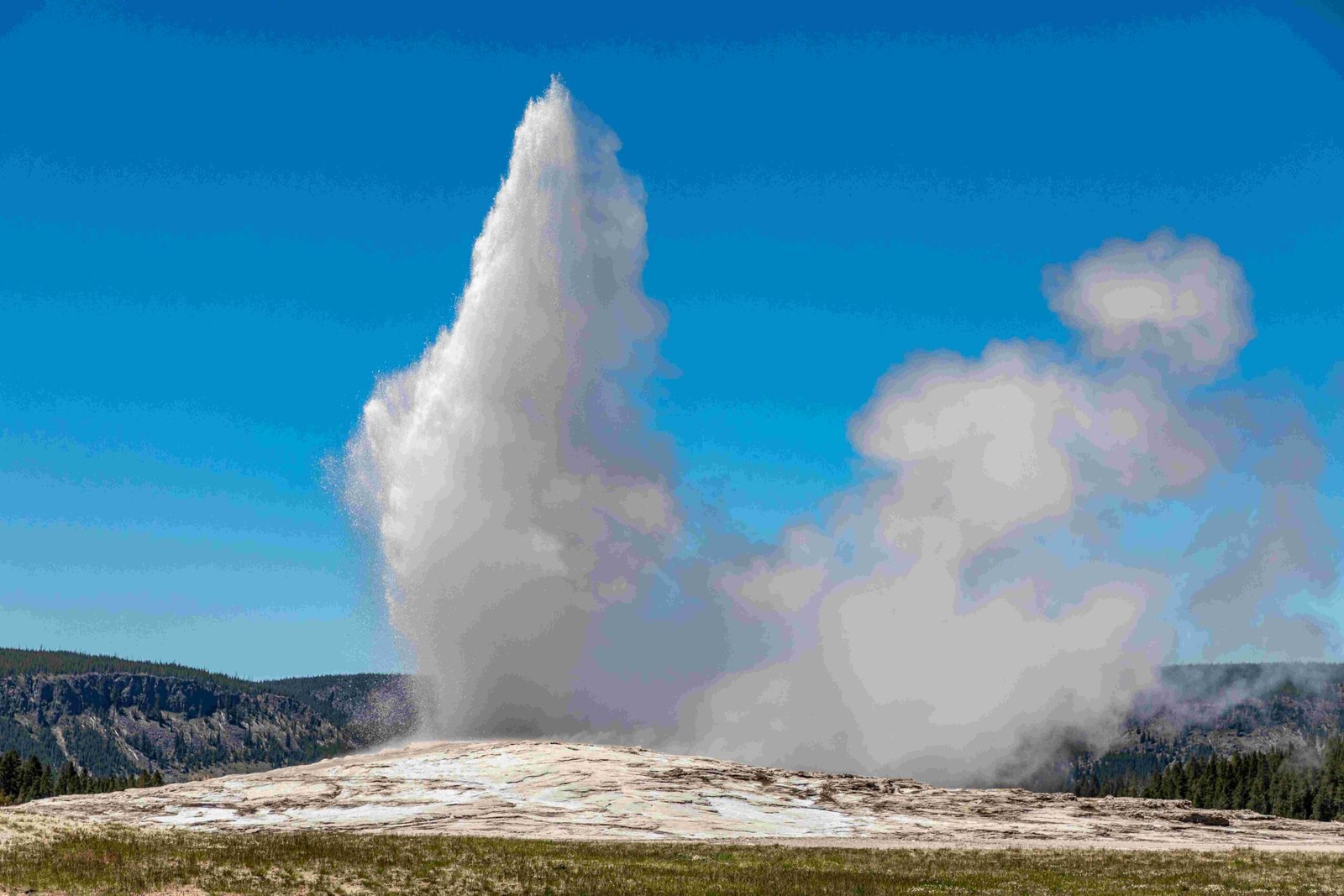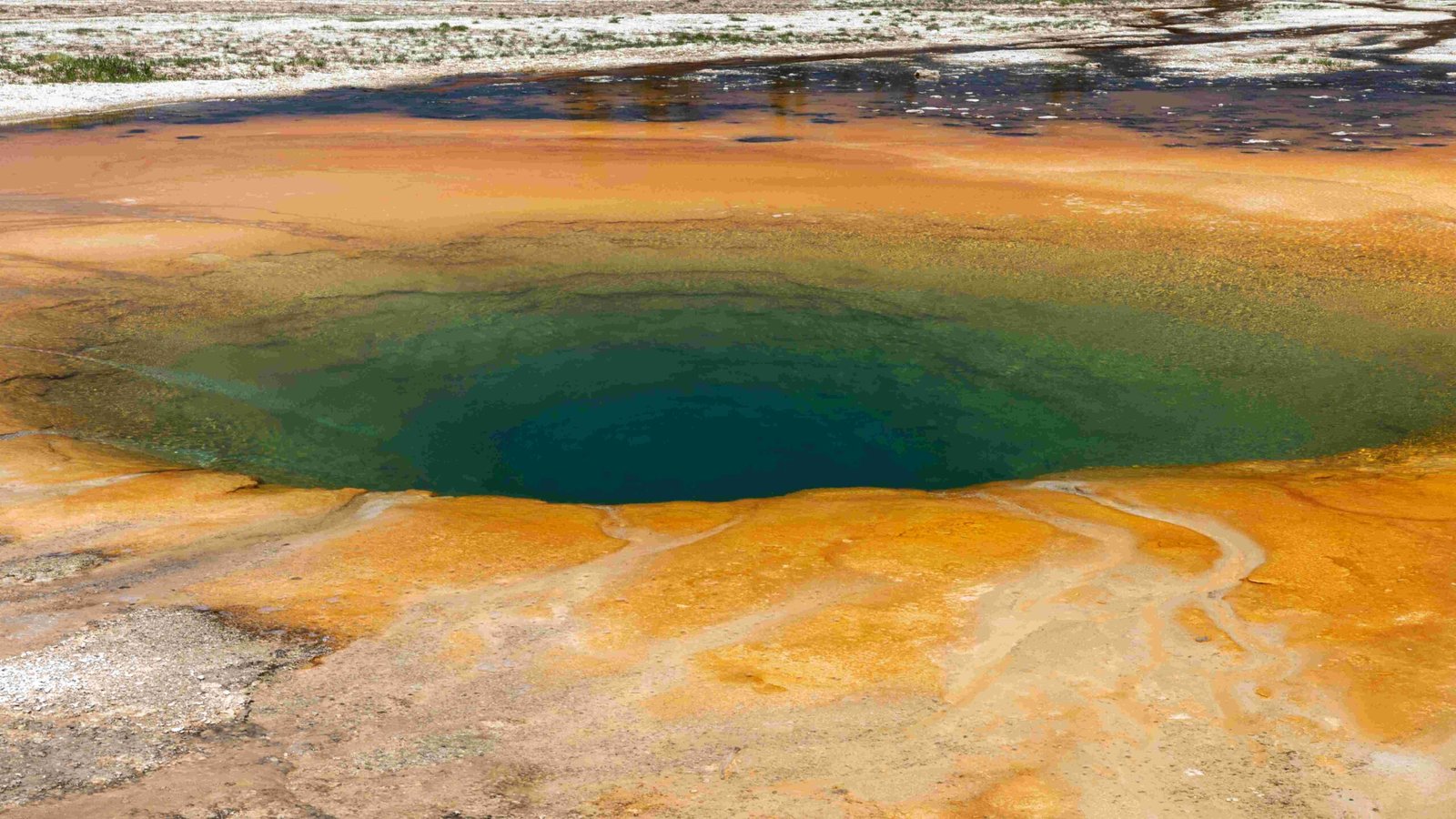The supervolcano underneath Yellowstone National Park erupts roughly every 725,000 years, based on historical data from three major eruptions over the past 2.1 million years. These cataclysmic events have shaped the landscape and continue to influence the park’s unique geothermal features. While the timing of eruptions is not precisely predictable, understanding the volcano’s history provides insights into its potential future activity and its impact on the surrounding environment.
What is the Eruption History of the Yellowstone Supervolcano?

The Yellowstone supervolcano has a complex and fascinating eruption history:
- Huckleberry Ridge eruption: Occurred approximately 2.1 million years ago
- Mesa Falls eruption: Took place around 1.3 million years ago
- Lava Creek eruption: The most recent major eruption, about 640,000 years ago
These eruptions have occurred at intervals ranging from 600,000 to 800,000 years, with an average of about 725,000 years between events. However, it’s crucial to note that volcanic activity doesn’t follow a strict schedule, and these intervals are not predictive of future eruptions.
How Do Scientists Study the Yellowstone Supervolcano?

Researchers employ various methods to study the Yellowstone supervolcano:
- Geological surveys: Examining rock layers and volcanic deposits
- Seismic monitoring: Tracking earthquakes and ground movements
- Gas emissions analysis: Measuring the release of volcanic gases
- Satellite observations: Monitoring ground deformation from space
- Geothermal feature studies: Analyzing hot springs, geysers, and fumaroles
These techniques help scientists understand the volcano’s current state and potential for future activity.
What Would Be the Impact of a Future Eruption?
A future eruption of the Yellowstone supervolcano would have far-reaching consequences:
| Impact Area | Effects |
|---|---|
| Local Environment | Devastation within hundreds of kilometers, pyroclastic flows, ash fall |
| Regional Climate | Reduced sunlight, lower temperatures, potential ecosystem collapse |
| Global Climate | Possible volcanic winter, disrupted weather patterns |
| Human Population | Immediate danger to nearby communities, widespread evacuation needed |
| Agriculture | Crop failures, food shortages, potential famine |
| Infrastructure | Damage to buildings, transportation networks, and communication systems |
The severity of these impacts would depend on the scale of the eruption and prevailing weather conditions.
How Does the Supervolcano Affect Yellowstone’s Geothermal Features?
The supervolcano is the driving force behind Yellowstone’s famous geothermal features:
- Geysers: Including the iconic Old Faithful
- Hot springs: Colorful pools like Grand Prismatic Spring
- Mud pots: Bubbling, acidic mud formations
- Fumaroles: Steam vents releasing volcanic gases
These features are a result of the immense heat generated by the magma chamber beneath the park, which interacts with groundwater and surface water.
What Safety Measures Are in Place for Visitors?
Yellowstone National Park has implemented several safety measures to protect visitors:
- Monitoring systems: Continuous surveillance of volcanic and seismic activity
- Emergency plans: Detailed evacuation procedures and response strategies
- Visitor education: Information centers and ranger programs about volcanic hazards
- Restricted areas: Clearly marked danger zones to prevent accidents
- Boardwalks and designated paths: Safe routes to view geothermal features
How Can Visitors Learn About the Supervolcano at Yellowstone?
Visitors to Yellowstone have numerous opportunities to learn about the supervolcano:
- Visitor Centers: Exhibits and interactive displays about the park’s geology
- Ranger-led Programs: Educational talks and guided walks focusing on volcanic features
- Self-guided Tours: Marked trails with informational signage about geological points of interest
- Junior Ranger Program: Activities for children to learn about the park’s volcanic history
- Online Resources: Virtual tours and educational materials available on the park’s website
What Are the Best Times to Visit Yellowstone for Volcanic Features?
While Yellowstone’s volcanic features are active year-round, certain times may offer better viewing experiences:
- Spring (May-June): Less crowded, with snow melting to reveal geothermal areas
- Summer (July-August): Peak season with all facilities open, but very crowded
- Fall (September-October): Fewer visitors, pleasant weather for hiking
- Winter (November-April): Unique views of steam against snowy landscapes, limited access
Each season offers a different perspective on the park’s volcanic wonders, from the contrast of steam against snow in winter to the vibrant colors of hot springs in summer.
How Does the Supervolcano Contribute to Yellowstone’s Ecosystem?
The supervolcano plays a crucial role in shaping Yellowstone’s unique ecosystem:
- Soil Enrichment: Volcanic ash and minerals contribute to fertile soils
- Diverse Habitats: Geothermal areas create specialized environments for unique organisms
- Water Chemistry: Volcanic activity influences the chemistry of rivers and lakes
- Thermophilic Life: Extreme heat supports communities of heat-loving microorganisms
- Wildlife Adaptation: Animals have adapted to utilize geothermal areas, especially in winter
This volcanic influence has created a biodiversity hotspot, supporting a wide range of plant and animal species found nowhere else on Earth.
In conclusion, the supervolcano underneath Yellowstone National Park, erupting roughly every 725,000 years, is a powerful force that has shaped and continues to shape one of America’s most iconic landscapes. While the potential for future eruptions exists, ongoing research and monitoring provide valuable insights into this geological wonder, allowing visitors to safely experience and learn about one of nature’s most awe-inspiring phenomena.
References:
1. IFLScience: Yellowstone Supervolcano: Is An Eruption Really Overdue?
2. EarthSky: Study reveals biggest Yellowstone supervolcano eruption
3. Wikipedia: Yellowstone Caldera
